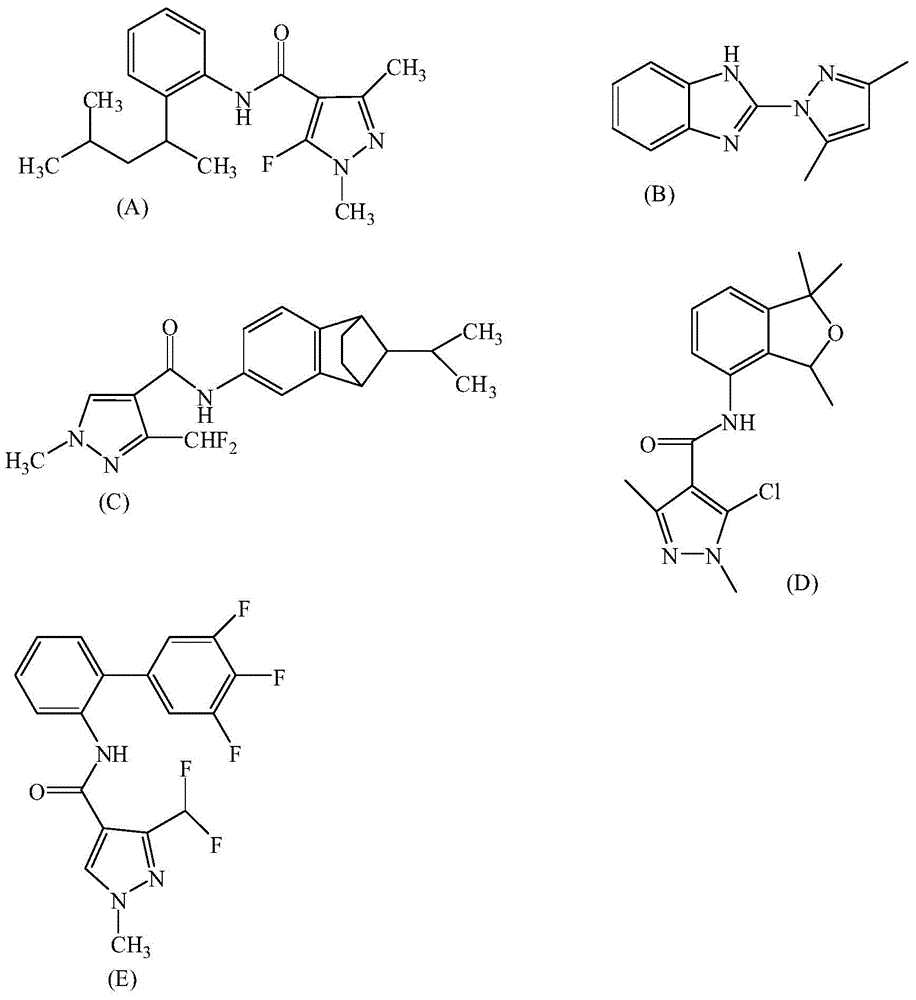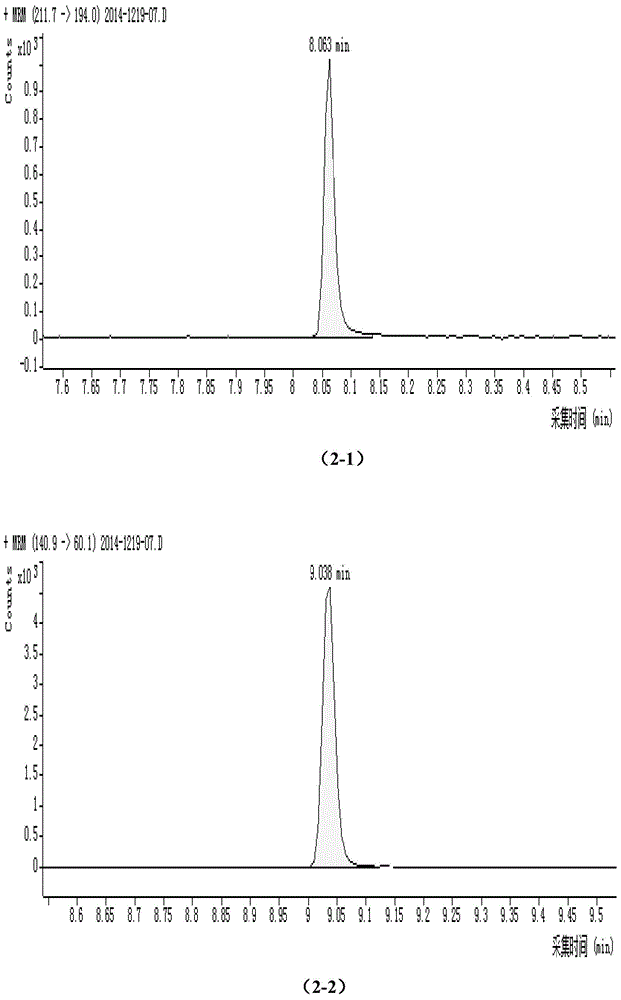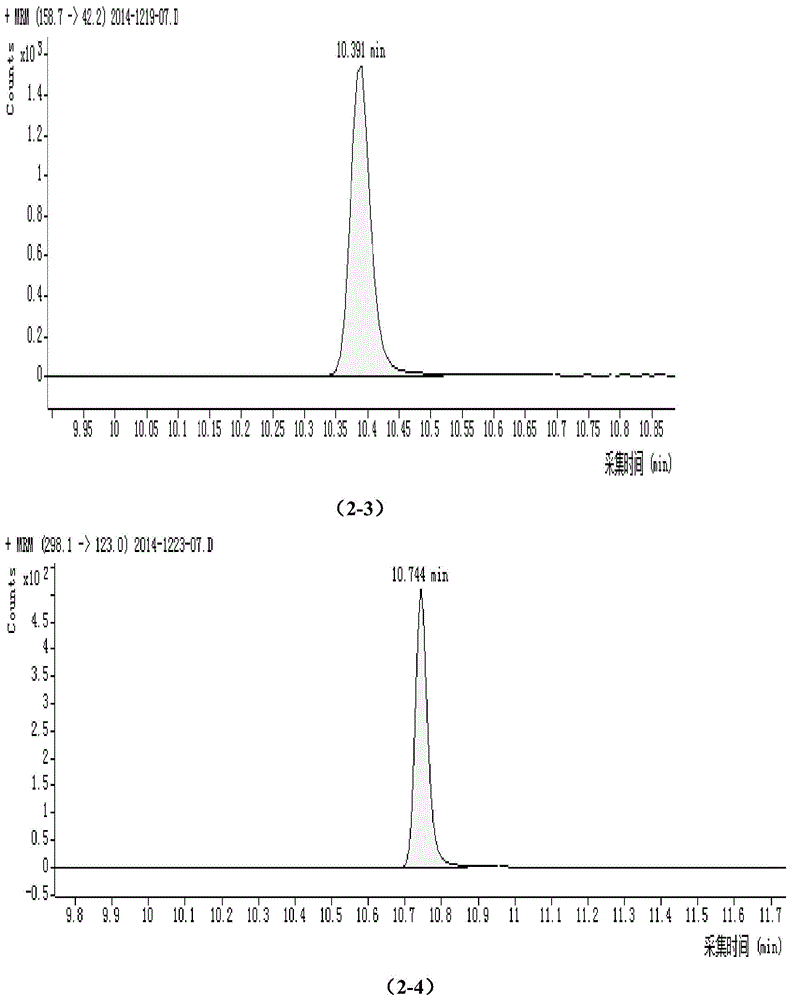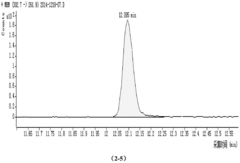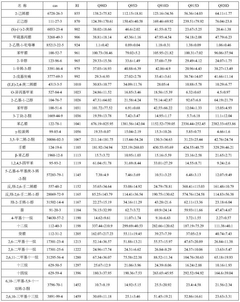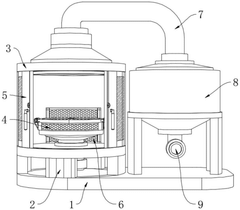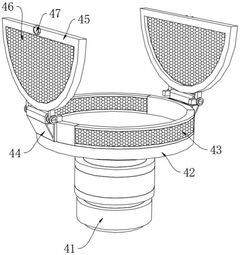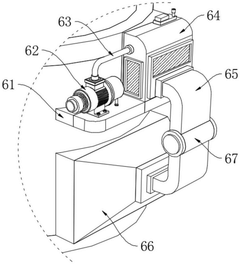GC-MS for Sourcing Aroma Compounds in Wine Industry
SEP 22, 20259 MIN READ
Generate Your Research Report Instantly with AI Agent
Patsnap Eureka helps you evaluate technical feasibility & market potential.
Wine Aroma Analysis Background and Objectives
The wine industry has witnessed a significant evolution in quality control and product development methodologies over the past decades. Gas Chromatography-Mass Spectrometry (GC-MS) has emerged as a pivotal analytical technique for identifying and quantifying aroma compounds in wine, transforming how vintners understand and manipulate flavor profiles. This technology enables precise chemical fingerprinting of volatile compounds that contribute to a wine's bouquet and taste characteristics.
The historical development of aroma analysis in winemaking traces back to traditional sensory evaluation methods, which relied heavily on human perception and subjective assessment. The introduction of chromatographic techniques in the mid-20th century marked the beginning of objective chemical analysis in wine. By the 1980s, GC-MS had become increasingly accessible to research institutions, allowing for more comprehensive studies of wine volatiles.
Today's wine industry faces growing demands for consistency, authenticity verification, and innovation in flavor profiles. Consumer preferences have shifted toward more distinctive and regionally characteristic wines, creating market pressure for producers to understand and control aroma compounds with greater precision. Additionally, climate change has introduced variability in grape composition, necessitating advanced analytical tools to maintain desired sensory properties despite changing growing conditions.
The primary objective of implementing GC-MS technology in wine aroma analysis is to establish quantitative relationships between chemical composition and sensory attributes. This enables producers to identify key aroma compounds that define regional typicity, detect off-flavors before they impact product quality, and develop targeted interventions in the winemaking process to enhance desirable characteristics.
Further objectives include creating comprehensive aroma compound databases specific to different grape varieties, vineyard locations, and production methods. These databases serve as reference points for authenticity verification and quality benchmarking. The technology also aims to support innovation by identifying novel aroma compounds that could differentiate products in competitive markets.
The wine industry's technological trajectory is moving toward integrating GC-MS data with artificial intelligence and machine learning algorithms to predict sensory outcomes based on chemical profiles. This represents a paradigm shift from reactive quality control to proactive flavor engineering. As analytical capabilities advance, the goal is to develop predictive models that can guide vineyard management and winemaking decisions to achieve specific aroma profiles tailored to market segments.
The historical development of aroma analysis in winemaking traces back to traditional sensory evaluation methods, which relied heavily on human perception and subjective assessment. The introduction of chromatographic techniques in the mid-20th century marked the beginning of objective chemical analysis in wine. By the 1980s, GC-MS had become increasingly accessible to research institutions, allowing for more comprehensive studies of wine volatiles.
Today's wine industry faces growing demands for consistency, authenticity verification, and innovation in flavor profiles. Consumer preferences have shifted toward more distinctive and regionally characteristic wines, creating market pressure for producers to understand and control aroma compounds with greater precision. Additionally, climate change has introduced variability in grape composition, necessitating advanced analytical tools to maintain desired sensory properties despite changing growing conditions.
The primary objective of implementing GC-MS technology in wine aroma analysis is to establish quantitative relationships between chemical composition and sensory attributes. This enables producers to identify key aroma compounds that define regional typicity, detect off-flavors before they impact product quality, and develop targeted interventions in the winemaking process to enhance desirable characteristics.
Further objectives include creating comprehensive aroma compound databases specific to different grape varieties, vineyard locations, and production methods. These databases serve as reference points for authenticity verification and quality benchmarking. The technology also aims to support innovation by identifying novel aroma compounds that could differentiate products in competitive markets.
The wine industry's technological trajectory is moving toward integrating GC-MS data with artificial intelligence and machine learning algorithms to predict sensory outcomes based on chemical profiles. This represents a paradigm shift from reactive quality control to proactive flavor engineering. As analytical capabilities advance, the goal is to develop predictive models that can guide vineyard management and winemaking decisions to achieve specific aroma profiles tailored to market segments.
Market Demand for Wine Aroma Profiling
The global wine industry has witnessed a significant shift towards quality differentiation and product authenticity, driving substantial market demand for advanced aroma profiling technologies. The market for wine aroma analysis using GC-MS (Gas Chromatography-Mass Spectrometry) is experiencing robust growth, with an estimated market value exceeding $300 million in 2023 and projected to grow at a compound annual growth rate of 7.8% through 2028.
Premium wine segments, which represent approximately 15% of volume but 40% of value in the global wine market, are particularly driving demand for precise aroma compound identification. Producers in these segments increasingly rely on scientific methods to validate terroir claims and maintain consistency across vintages, creating a steady demand for analytical services and equipment.
Consumer preferences are evolving toward more sophisticated flavor profiles, with 68% of wine enthusiasts in recent surveys indicating that aroma complexity significantly influences their purchasing decisions. This consumer-driven trend has compelled wineries to invest in technologies that can help them understand and optimize the aromatic compounds in their products.
Regulatory requirements represent another significant market driver. With increasing scrutiny on wine authenticity and labeling accuracy, producers must verify the chemical composition of their products. Several wine-producing regions, particularly in Europe, have implemented regulations requiring scientific validation of regional characteristics, creating a compliance-driven demand for aroma profiling technologies.
The market demonstrates strong regional variations, with established wine regions in Europe showing steady demand for advanced analytical services, while emerging wine markets in Asia-Pacific and North America exhibit the highest growth rates, exceeding 10% annually. These emerging markets are investing heavily in quality improvement initiatives to compete with traditional wine-producing regions.
Commercial laboratories serving the wine industry have reported a 35% increase in requests for detailed aroma profiling services over the past five years. This trend is particularly pronounced among mid-sized wineries seeking to elevate their product positioning without maintaining in-house analytical capabilities.
The market is further stimulated by research institutions and universities that utilize GC-MS technology for wine research, contributing approximately 20% of the total market demand. These institutions focus on developing new methodologies for identifying unique regional markers and understanding how viticultural and enological practices influence aroma development.
Premium wine segments, which represent approximately 15% of volume but 40% of value in the global wine market, are particularly driving demand for precise aroma compound identification. Producers in these segments increasingly rely on scientific methods to validate terroir claims and maintain consistency across vintages, creating a steady demand for analytical services and equipment.
Consumer preferences are evolving toward more sophisticated flavor profiles, with 68% of wine enthusiasts in recent surveys indicating that aroma complexity significantly influences their purchasing decisions. This consumer-driven trend has compelled wineries to invest in technologies that can help them understand and optimize the aromatic compounds in their products.
Regulatory requirements represent another significant market driver. With increasing scrutiny on wine authenticity and labeling accuracy, producers must verify the chemical composition of their products. Several wine-producing regions, particularly in Europe, have implemented regulations requiring scientific validation of regional characteristics, creating a compliance-driven demand for aroma profiling technologies.
The market demonstrates strong regional variations, with established wine regions in Europe showing steady demand for advanced analytical services, while emerging wine markets in Asia-Pacific and North America exhibit the highest growth rates, exceeding 10% annually. These emerging markets are investing heavily in quality improvement initiatives to compete with traditional wine-producing regions.
Commercial laboratories serving the wine industry have reported a 35% increase in requests for detailed aroma profiling services over the past five years. This trend is particularly pronounced among mid-sized wineries seeking to elevate their product positioning without maintaining in-house analytical capabilities.
The market is further stimulated by research institutions and universities that utilize GC-MS technology for wine research, contributing approximately 20% of the total market demand. These institutions focus on developing new methodologies for identifying unique regional markers and understanding how viticultural and enological practices influence aroma development.
GC-MS Technology Status and Challenges in Enology
Gas Chromatography-Mass Spectrometry (GC-MS) has emerged as a cornerstone analytical technique in enology, enabling precise identification and quantification of volatile compounds that contribute to wine's aromatic profile. The current technological landscape shows significant advancements in both hardware capabilities and software analysis tools, with high-resolution mass spectrometers becoming increasingly accessible to mid-sized wineries and research institutions.
Despite these advancements, several technical challenges persist in the application of GC-MS for wine aroma analysis. Sample preparation remains a critical bottleneck, with various extraction methods (SPME, SBSE, liquid-liquid extraction) each presenting specific limitations in capturing the full spectrum of aroma compounds. The diverse chemical nature of wine volatiles, ranging from highly polar to non-polar compounds, necessitates multiple analytical approaches, complicating standardization efforts.
Sensitivity thresholds continue to challenge analysts, particularly for trace compounds with low odor thresholds that significantly impact sensory perception despite their minimal concentration. Current GC-MS systems struggle to detect certain sulfur compounds and terpenes at concentrations below 0.1 ppb without specialized detectors or derivatization techniques.
Matrix effects represent another substantial challenge, as wine's complex composition can mask or interfere with target analytes. The high ethanol content particularly complicates chromatographic separation and can suppress ionization in mass spectrometry, reducing overall sensitivity for certain compound classes.
Geographically, GC-MS technology development shows distinct regional patterns. European research institutions, particularly in France, Italy, and Spain, lead in application-specific method development for wine analysis. Meanwhile, instrument innovation is concentrated in the United States, Japan, and Germany, where major manufacturers continue to push technological boundaries in resolution and sensitivity.
Data interpretation presents perhaps the most significant contemporary challenge. The vast amount of information generated by modern GC-MS analyses requires sophisticated chemometric approaches and machine learning algorithms to extract meaningful patterns. The correlation between chemical composition and sensory attributes remains imperfectly understood, with researchers still working to establish reliable predictive models.
Standardization across the industry faces obstacles due to proprietary methods, varying instrumental parameters, and different data processing workflows. This hampers direct comparison of results between laboratories and complicates the establishment of industry-wide reference databases for wine volatile compounds.
Emerging challenges include the need for portable or rapid GC-MS solutions suitable for vineyard or production-line implementation, allowing real-time decision making during the winemaking process rather than retrospective analysis in laboratory settings.
Despite these advancements, several technical challenges persist in the application of GC-MS for wine aroma analysis. Sample preparation remains a critical bottleneck, with various extraction methods (SPME, SBSE, liquid-liquid extraction) each presenting specific limitations in capturing the full spectrum of aroma compounds. The diverse chemical nature of wine volatiles, ranging from highly polar to non-polar compounds, necessitates multiple analytical approaches, complicating standardization efforts.
Sensitivity thresholds continue to challenge analysts, particularly for trace compounds with low odor thresholds that significantly impact sensory perception despite their minimal concentration. Current GC-MS systems struggle to detect certain sulfur compounds and terpenes at concentrations below 0.1 ppb without specialized detectors or derivatization techniques.
Matrix effects represent another substantial challenge, as wine's complex composition can mask or interfere with target analytes. The high ethanol content particularly complicates chromatographic separation and can suppress ionization in mass spectrometry, reducing overall sensitivity for certain compound classes.
Geographically, GC-MS technology development shows distinct regional patterns. European research institutions, particularly in France, Italy, and Spain, lead in application-specific method development for wine analysis. Meanwhile, instrument innovation is concentrated in the United States, Japan, and Germany, where major manufacturers continue to push technological boundaries in resolution and sensitivity.
Data interpretation presents perhaps the most significant contemporary challenge. The vast amount of information generated by modern GC-MS analyses requires sophisticated chemometric approaches and machine learning algorithms to extract meaningful patterns. The correlation between chemical composition and sensory attributes remains imperfectly understood, with researchers still working to establish reliable predictive models.
Standardization across the industry faces obstacles due to proprietary methods, varying instrumental parameters, and different data processing workflows. This hampers direct comparison of results between laboratories and complicates the establishment of industry-wide reference databases for wine volatile compounds.
Emerging challenges include the need for portable or rapid GC-MS solutions suitable for vineyard or production-line implementation, allowing real-time decision making during the winemaking process rather than retrospective analysis in laboratory settings.
Current GC-MS Applications for Wine Volatile Compounds
01 GC-MS analysis methods for aroma compounds identification
Gas Chromatography-Mass Spectrometry (GC-MS) techniques are used to identify and quantify volatile aroma compounds in various samples. These methods involve sample preparation, chromatographic separation, and mass spectrometric detection to accurately characterize complex mixtures of aromatic compounds. The analysis typically includes optimization of temperature programs, column selection, and detection parameters to achieve high resolution and sensitivity for aroma profiling.- GC-MS analysis methods for aroma compounds identification: Gas Chromatography-Mass Spectrometry (GC-MS) techniques are used to identify and quantify volatile aroma compounds in various samples. These methods involve sample preparation, chromatographic separation, and mass spectrometric detection to accurately characterize aromatic profiles. Advanced analytical protocols enable the detection of trace-level compounds and differentiation between similar aromatic molecules, providing comprehensive data on complex aroma compositions.
- GC-MS equipment and instrumentation for aroma analysis: Specialized GC-MS equipment designed specifically for aroma compound analysis includes modified injection systems, specialized columns, and enhanced detectors. These instruments feature optimized temperature programming, improved ionization sources, and dedicated software for aroma compound libraries. Custom-designed sampling accessories facilitate the capture and analysis of volatile compounds from various matrices while minimizing contamination and sample degradation.
- Food and beverage aroma profiling using GC-MS: GC-MS techniques are applied to characterize the aroma profiles of various food and beverage products, identifying key flavor compounds that contribute to sensory qualities. These methods help in quality control, authenticity verification, and product development by establishing relationships between chemical composition and sensory attributes. The analysis enables manufacturers to maintain consistency, detect adulteration, and develop new formulations with desired aromatic properties.
- Natural product and essential oil aroma analysis: GC-MS methodologies are employed to analyze the complex aroma profiles of natural products and essential oils, identifying bioactive volatile compounds and their concentrations. These techniques help characterize plant-derived materials, determine geographical origin, assess quality, and standardize products. The analysis supports the development of natural fragrances, therapeutic applications, and the authentication of high-value essential oils in the cosmetic and pharmaceutical industries.
- Environmental and industrial aroma compound monitoring: GC-MS systems are utilized for monitoring aroma compounds in environmental and industrial settings, detecting volatile organic compounds that may indicate contamination, process efficiency, or product quality issues. These analytical methods help identify sources of odors, monitor air quality, and ensure compliance with regulations. The techniques support industrial process optimization, environmental impact assessment, and the development of odor control strategies.
02 GC-MS equipment and instrumentation for aroma analysis
Specialized GC-MS equipment and instrumentation designed specifically for aroma compound analysis includes modified injection systems, specialized columns, and enhanced detection capabilities. These instruments often feature automated sampling systems, temperature-controlled sample compartments, and dedicated software for aroma compound library matching. Some systems incorporate additional components such as olfactory detection ports that allow simultaneous sensory evaluation alongside instrumental analysis.Expand Specific Solutions03 Applications of GC-MS in food and beverage aroma analysis
GC-MS technology is widely applied in the food and beverage industry to analyze aroma compounds that contribute to flavor profiles. This includes characterization of volatile compounds in products such as wine, coffee, tea, fruits, and processed foods. The technique helps in quality control, authentication of origin, detection of off-flavors, and development of new flavor formulations by providing detailed molecular fingerprints of complex aroma profiles.Expand Specific Solutions04 GC-MS analysis of plant-derived aroma compounds
GC-MS techniques are employed to analyze volatile compounds from various plant sources including essential oils, herbs, spices, and medicinal plants. These methods enable the identification and quantification of terpenes, aldehydes, esters, and other bioactive compounds responsible for characteristic aromas. The analysis helps in standardization of plant extracts, evaluation of extraction methods, and discovery of novel bioactive compounds with potential applications in perfumery, cosmetics, and pharmaceuticals.Expand Specific Solutions05 Novel sample preparation techniques for GC-MS aroma analysis
Advanced sample preparation methods enhance the efficiency and sensitivity of GC-MS analysis for aroma compounds. These techniques include solid-phase microextraction (SPME), headspace sampling, stir bar sorptive extraction, and various derivatization approaches. These methods allow for selective extraction of volatile compounds from complex matrices, concentration of trace components, and improved chromatographic separation, resulting in more comprehensive aroma profiling with minimal sample manipulation.Expand Specific Solutions
Key Industry Players in Wine Aroma Analysis
The GC-MS technology for sourcing aroma compounds in the wine industry is currently in a growth phase, with an expanding market driven by increasing demand for quality control and product differentiation in premium wines. The global market for wine aroma analysis is estimated to be growing at 5-8% annually, reaching approximately $300-350 million. Technologically, GC-MS applications in wine aroma profiling are moderately mature but continuously evolving. Academic institutions like Jiangnan University, Zhejiang University, and Shanghai Jiao Tong University are leading fundamental research, while companies such as Suzhou Jianyuan Testing Technology and Yunnan Comtestor are commercializing applications. China Tobacco affiliated companies are also leveraging similar analytical techniques for flavor profiling, suggesting cross-industry technology transfer potential in this specialized analytical field.
Jiangnan University
Technical Solution: Jiangnan University has pioneered an integrated GC-MS platform for wine aroma analysis that combines targeted and untargeted metabolomics approaches. Their system employs multiple derivatization strategies to enhance detection of polar aroma precursors alongside volatile compounds, providing a comprehensive view of both immediate aroma profile and aroma potential. The university's research team has developed specialized internal standards and calibration methods that improve quantification accuracy across diverse wine matrices. Their technology incorporates a novel thermal desorption system that allows direct analysis of wine without sample preparation, enabling rapid screening applications. The platform includes proprietary software that automatically classifies wines based on aroma profiles and identifies compounds responsible for off-flavors or quality defects. Their approach has been validated across multiple wine styles and has demonstrated the ability to predict aging potential based on precursor compound profiles, offering valuable insights for wine production optimization.
Strengths: Integrated analysis of both volatile compounds and aroma precursors; rapid screening capability through direct thermal desorption; specialized software for automatic quality assessment and defect identification. Weaknesses: Some approaches sacrifice depth of analysis for speed; thermal desorption may alter certain compound ratios; software classification requires extensive training with regional wine samples.
Zhejiang University
Technical Solution: Zhejiang University has developed advanced GC-MS methodologies specifically optimized for wine aroma compound identification and quantification. Their approach combines headspace solid-phase microextraction (HS-SPME) with comprehensive two-dimensional gas chromatography-mass spectrometry (GC×GC-MS) to achieve superior separation of complex wine volatile compounds. The university's research team has created specialized databases of wine aroma compounds and their mass spectral fingerprints, enabling rapid identification of key odorants that contribute to varietal character. They've also pioneered the use of chemometric analysis tools to correlate GC-MS data with sensory evaluation results, establishing predictive models for wine quality assessment based on chemical profiles. Their technology allows for detection of compounds at concentrations below 0.1 μg/L, capturing trace aroma compounds that significantly impact wine perception.
Strengths: Superior compound separation capability through GC×GC-MS technology; comprehensive aroma compound database specific to wine varieties; advanced chemometric tools for correlating chemical data with sensory attributes. Weaknesses: Equipment-intensive approach requiring significant technical expertise; higher cost compared to conventional methods; longer analysis time for comprehensive profiling.
Critical Innovations in Wine Aroma Compound Identification
Solid-phase extraction-gas chromatography tandem mass spectrometry detection method for pyrazol bactericides in wine
PatentActiveCN104569271A
Innovation
- Solid-phase extraction-gas chromatography-tandem mass spectrometry (GC-MS/MS) was used to purify and enrich the wine samples through a solid-phase extraction column, and then combined with gas chromatography-tandem mass spectrometry for qualitative and quantitative analysis, using standards with stepped concentrations. Detect the working solution and mass spectrum to determine the precursor ions and quantitative ions to achieve accurate determination of pyrazole fungicides.
Wax gourd volatile aroma substance collecting device and application thereof
PatentPendingCN119901851A
Innovation
- A volatile aroma substance collection device for winter melon is designed, which includes a rotating mechanism and a temperature control mechanism. The rotating mechanism is uniformly heated by the rotating mechanism. The rotating mechanism includes a motor, a rotary table and a winter melon accommodation mechanism. The temperature control mechanism accurately controls the temperature in the volatile box to ensure that the winter melon volatilizes aroma substances at the optimal temperature.
Regulatory Standards for Wine Authentication
Wine authentication has become increasingly important in the global market, with regulatory bodies establishing comprehensive standards to ensure product integrity and consumer protection. The European Union leads with Regulation (EU) No. 1308/2013, which provides a detailed framework for wine labeling, geographical indications, and production methods. This regulation specifically addresses the analytical methods, including GC-MS techniques, that are considered acceptable for official authentication purposes.
In the United States, the Alcohol and Tobacco Tax and Trade Bureau (TTB) enforces regulations that require accurate representation of wine origin, vintage, and varietal composition. TTB regulations 27 CFR Part 4 specifically outline the analytical parameters for wine authentication, with increasing emphasis on chemical profiling techniques such as GC-MS for verification of aroma compound profiles that correspond to declared grape varieties and regions.
The International Organisation of Vine and Wine (OIV) has established Resolution OIV-OENO 618-2019, which provides standardized protocols for the application of chromatographic methods in wine authentication. This resolution specifically addresses the use of GC-MS for identifying characteristic volatile compounds that serve as markers for authenticity verification, with detailed specifications for sample preparation, analytical conditions, and data interpretation.
Australia's Wine Australia Regulations 2018 incorporate specific provisions for chemical analysis requirements, including the use of advanced analytical techniques for authentication purposes. These regulations emphasize the importance of aroma compound profiling as a key component of the authentication process, particularly for premium wine exports.
Regulatory standards increasingly recognize the "chemical fingerprint" concept, where the unique pattern of aroma compounds identified through GC-MS analysis serves as a reliable indicator of wine authenticity. The European Committee for Standardization (CEN) has published technical specifications (CEN/TS 17062:2019) for the application of fingerprinting techniques in food authentication, which are being adapted specifically for wine authentication protocols.
Compliance with these regulatory standards requires wine producers to maintain detailed records of production processes and analytical results. Many jurisdictions now mandate the retention of reference samples for potential future authentication challenges, with specific requirements for storage conditions to preserve volatile aroma compounds that might be subject to GC-MS verification during regulatory inspections or market surveillance activities.
In the United States, the Alcohol and Tobacco Tax and Trade Bureau (TTB) enforces regulations that require accurate representation of wine origin, vintage, and varietal composition. TTB regulations 27 CFR Part 4 specifically outline the analytical parameters for wine authentication, with increasing emphasis on chemical profiling techniques such as GC-MS for verification of aroma compound profiles that correspond to declared grape varieties and regions.
The International Organisation of Vine and Wine (OIV) has established Resolution OIV-OENO 618-2019, which provides standardized protocols for the application of chromatographic methods in wine authentication. This resolution specifically addresses the use of GC-MS for identifying characteristic volatile compounds that serve as markers for authenticity verification, with detailed specifications for sample preparation, analytical conditions, and data interpretation.
Australia's Wine Australia Regulations 2018 incorporate specific provisions for chemical analysis requirements, including the use of advanced analytical techniques for authentication purposes. These regulations emphasize the importance of aroma compound profiling as a key component of the authentication process, particularly for premium wine exports.
Regulatory standards increasingly recognize the "chemical fingerprint" concept, where the unique pattern of aroma compounds identified through GC-MS analysis serves as a reliable indicator of wine authenticity. The European Committee for Standardization (CEN) has published technical specifications (CEN/TS 17062:2019) for the application of fingerprinting techniques in food authentication, which are being adapted specifically for wine authentication protocols.
Compliance with these regulatory standards requires wine producers to maintain detailed records of production processes and analytical results. Many jurisdictions now mandate the retention of reference samples for potential future authentication challenges, with specific requirements for storage conditions to preserve volatile aroma compounds that might be subject to GC-MS verification during regulatory inspections or market surveillance activities.
Sensory-Instrumental Correlation Techniques
Sensory-instrumental correlation techniques represent a critical bridge between human perception and analytical measurements in the wine industry. These methodologies aim to establish meaningful relationships between sensory descriptors provided by trained panelists and the chemical compounds identified through GC-MS analysis. The correlation process typically involves statistical approaches such as Partial Least Squares (PLS) regression, Principal Component Analysis (PCA), and Multiple Factor Analysis (MFA) to identify which volatile compounds are most responsible for specific sensory attributes.
Recent advancements in correlation techniques have introduced machine learning algorithms that can process complex, non-linear relationships between sensory data and chemical profiles. These models have demonstrated improved predictive capabilities compared to traditional statistical methods, particularly when dealing with the intricate aroma profiles characteristic of wine. Neural networks and support vector machines have shown particular promise in modeling the relationship between chemical composition and sensory perception.
The Gas Chromatography Olfactometry (GC-O) technique serves as a fundamental tool in establishing these correlations by allowing simultaneous chemical detection and sensory evaluation. This approach enables researchers to identify odor-active compounds and determine their Odor Activity Values (OAVs), which represent the ratio of a compound's concentration to its odor threshold. Compounds with high OAVs typically contribute significantly to the overall aroma profile of wine.
Temporal Dominance of Sensations (TDS) and Progressive Profiling techniques have emerged as dynamic sensory methods that can be correlated with time-resolved GC-MS data. These approaches acknowledge that wine tasting is a temporal experience, with different compounds being perceived at different stages of evaluation. By synchronizing these temporal sensory data with chromatographic profiles, researchers can develop more nuanced understanding of how chemical composition influences the evolution of wine aroma perception.
Multiblock data analysis techniques have gained prominence for handling the heterogeneous data sets generated in sensory-instrumental correlation studies. These methods allow for the integration of data from multiple sources—sensory panels, GC-MS analysis, and physicochemical measurements—while preserving the structure of each data block. This integrated approach provides a more comprehensive understanding of the relationships between chemical composition and sensory attributes in wine.
Validation protocols for sensory-instrumental correlations have become increasingly rigorous, incorporating cross-validation techniques and external validation sets to ensure the robustness and predictive power of established correlations. This methodological rigor is essential for developing reliable predictive models that can guide winemaking decisions based on desired sensory outcomes.
Recent advancements in correlation techniques have introduced machine learning algorithms that can process complex, non-linear relationships between sensory data and chemical profiles. These models have demonstrated improved predictive capabilities compared to traditional statistical methods, particularly when dealing with the intricate aroma profiles characteristic of wine. Neural networks and support vector machines have shown particular promise in modeling the relationship between chemical composition and sensory perception.
The Gas Chromatography Olfactometry (GC-O) technique serves as a fundamental tool in establishing these correlations by allowing simultaneous chemical detection and sensory evaluation. This approach enables researchers to identify odor-active compounds and determine their Odor Activity Values (OAVs), which represent the ratio of a compound's concentration to its odor threshold. Compounds with high OAVs typically contribute significantly to the overall aroma profile of wine.
Temporal Dominance of Sensations (TDS) and Progressive Profiling techniques have emerged as dynamic sensory methods that can be correlated with time-resolved GC-MS data. These approaches acknowledge that wine tasting is a temporal experience, with different compounds being perceived at different stages of evaluation. By synchronizing these temporal sensory data with chromatographic profiles, researchers can develop more nuanced understanding of how chemical composition influences the evolution of wine aroma perception.
Multiblock data analysis techniques have gained prominence for handling the heterogeneous data sets generated in sensory-instrumental correlation studies. These methods allow for the integration of data from multiple sources—sensory panels, GC-MS analysis, and physicochemical measurements—while preserving the structure of each data block. This integrated approach provides a more comprehensive understanding of the relationships between chemical composition and sensory attributes in wine.
Validation protocols for sensory-instrumental correlations have become increasingly rigorous, incorporating cross-validation techniques and external validation sets to ensure the robustness and predictive power of established correlations. This methodological rigor is essential for developing reliable predictive models that can guide winemaking decisions based on desired sensory outcomes.
Unlock deeper insights with Patsnap Eureka Quick Research — get a full tech report to explore trends and direct your research. Try now!
Generate Your Research Report Instantly with AI Agent
Supercharge your innovation with Patsnap Eureka AI Agent Platform!
